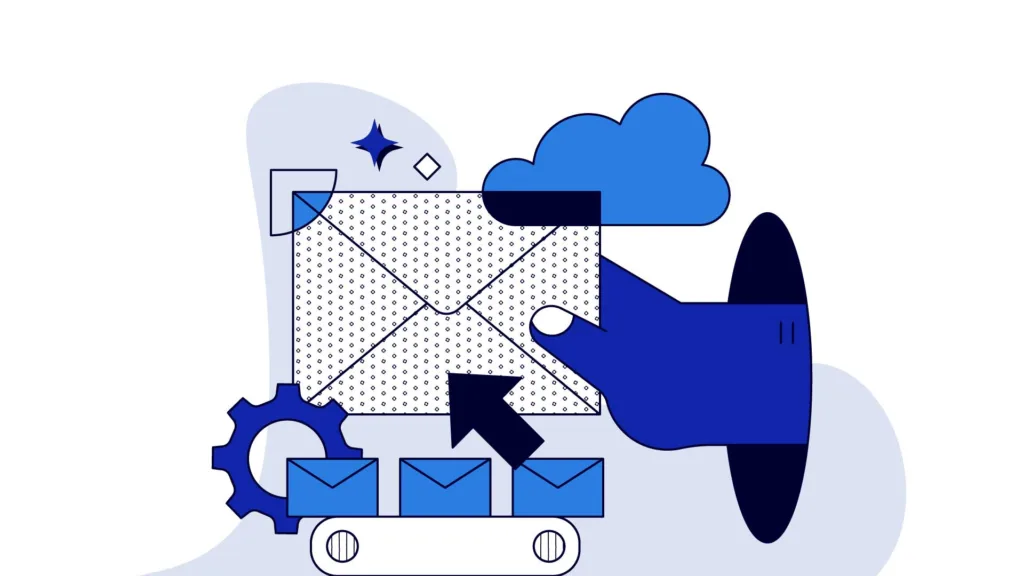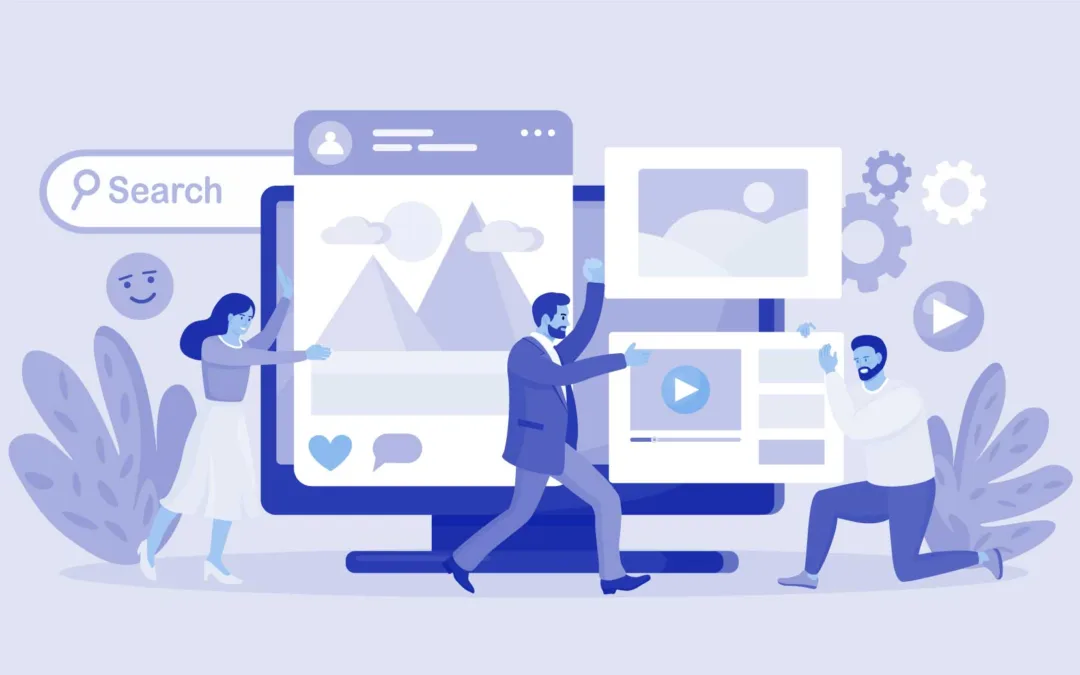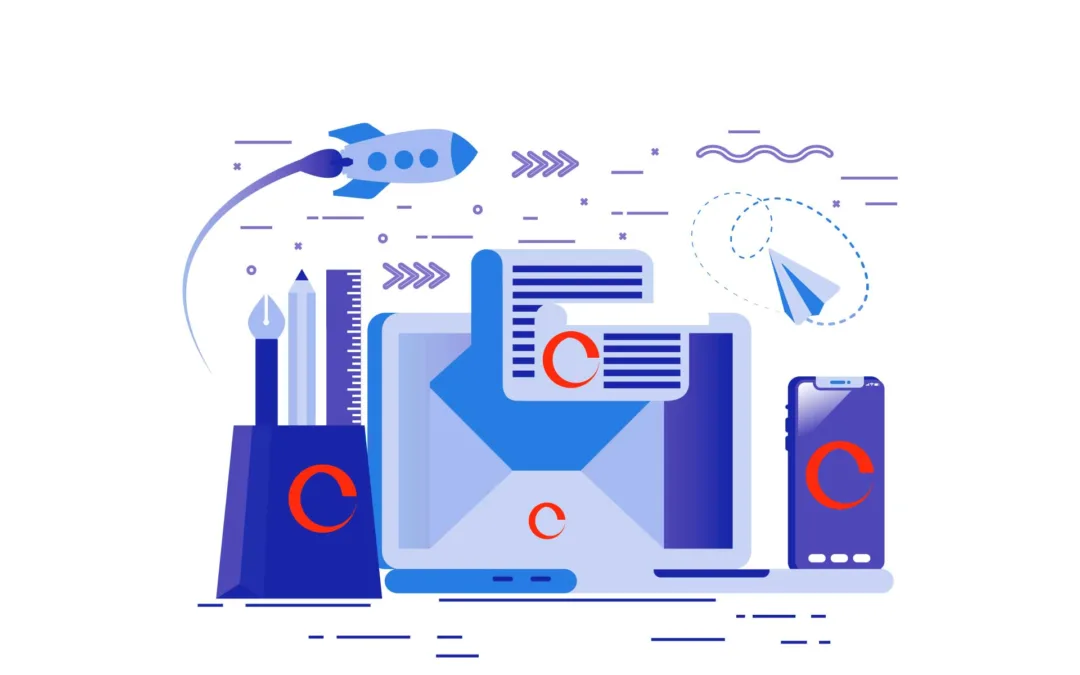Unlock your small business growth with our complete marketing guide: perfect your offer, know your market, and turn first glances into lasting loyalty. Start now!
Table of Contents
This comprehensive guide is your first step towards marketing mastery. Tailored for the unique landscape of Hickory, where every small business owner and manager aspires not just to succeed but to leave a lasting mark, we introduce you to a marketing framework that replaces uncertainty with clarity and stagnation with growth. At the heart of this journey is the core of your business’s success: the offer. Whether you’re crafting it anew or refining an existing gem, understanding the delicate dance between your offer and your target market is crucial.
From setting clear, guiding stars in your marketing efforts to diving deep into the demographics, psychographics, and geographics of your ideal customer, every step is a building block towards a relationship where your customers don’t just see a business, but a partner that truly understands their needs and desires. With insights into selecting the right platforms, leveraging the power of email marketing, creating a seamless marketing funnel, and much more, you’re not just preparing to meet your market. You’re gearing up to exceed their expectations.
So, let’s embark on this journey together. With this guide, we’ll navigate the waters of marketing in Hickory, ensuring that your business isn’t just seen, but remembered; not just heard, but listened to. Ready to transform your small business into a local powerhouse? Let’s dive in.

Key Takeaways
- Embrace a Strategic Marketing Framework: Adopting a structured approach eliminates guesswork, enabling targeted strategies that drive growth.
- Understand the Power of the Offer: Tailoring your offer to meet the market’s needs is foundational to marketing success.
- Set Clear Marketing Goals: Clear goals act as a compass, guiding your marketing efforts toward success.
- Deep Dive into Your Target Market: Knowing your audience inside out is essential for creating resonant marketing messages.
- Address Desires and Pain Points: Effective marketing bridges the gap between your audience’s current state and their desired outcomes.
- Choose the Right Platform: Presence on platforms where your audience is active enhances engagement and reach.
- Leverage Appropriate Content and Channels: Matching content types and marketing channels with your business and audience maximizes impact.
- Utilize Email Marketing: Email marketing remains a vital tool for reaching out to and retaining customers.
- Develop a Marketing Funnel: A well-structured funnel facilitates customer journey from awareness to loyalty.
- Understand Customer Lifetime Value: Knowing CLV guides investment in marketing and retention strategies.
- Capitalize on Video Content: Video is a versatile tool that enhances engagement at all funnel stages.
- Differentiate Your Business: Standing out involves offering unique value that sets you apart from the competition.

Embrace a Strategic Marketing Framework
In Hickory, NC, where small businesses thrive on innovation, a proven marketing framework becomes a lighthouse amidst the storm of competition and changing consumer landscapes. This isn’t just about using the right tools; it’s a strategic guide for crafting marketing strategies that capture attention and drive growth. By trading guesswork for strategic planning, it sets a solid foundation for targeted and effective marketing efforts.
The heart of this framework is understanding your offer and its relevance to your target market. It prompts businesses, new and established alike, to scrutinize their offerings and audience with precision. This step ensures every marketing move is not random but a calculated step towards meeting the market’s demands and expectations.
Additionally, the framework champions the setting of clear, achievable goals. It reframes marketing as a strategic journey, guiding businesses towards success with a clear “north star.” This approach helps Hickory’s businesses define success, fostering strategies that align with their objectives and adapt to market changes. Embracing this framework means transforming customer engagement from fleeting interactions into lasting connections, propelling sustainable growth.

Understand the Power of the Offer
At the heart of every memorable marketing campaign is an irresistible offer. Think of it as the bait that lures customers into your world, promising them value that’s hard to turn down. Whether you’re just stepping onto the scene in Hickory, NC, or you’ve been a part of the community fabric for years, the essence of your success starts with what you’re offering. But here’s where the plot thickens: should you spotlight the offer itself or the audience you’re aiming to captivate?
For the newcomers on the block, the priority is crystal clear: get to know your audience like the back of your hand. In a town bustling with diversity and preferences, understanding the target market’s needs isn’t just important—it’s your blueprint for relevance. Before you can even think of success, you need to delve deep into the desires, pains, and dreams of your prospective customers. What makes them tick? What keeps them up at night? Answering these questions is your first step towards making an offer they can’t refuse.
On the flip side, established businesses in Hickory have a different kind of challenge. The key for them lies in refinement. You’ve got history and data on your side—use it. Analyze what’s worked in the past and tweak your offers accordingly. It’s about evolving with your audience, ensuring that your value proposition grows richer and more compelling with time. This doesn’t mean reinventing the wheel but rather oiling it to spin smoothly and meet your audience’s ever-changing needs. Whether you’re introducing new products or enhancing services, remember: the goal is to stay relevant and irresistible in the eyes of those who matter most—your customers.

Set Clear Marketing Goals
Imagine setting sail without a compass, navigating the vast ocean with no direction. That’s what marketing without clear goals feels like—aimless and uncertain. For small businesses in Hickory, NC, setting clear marketing goals isn’t just helpful; it’s the beacon that guides every decision, every strategy, and every dollar spent. These goals are your “north star,” illuminating the path to success and ensuring that every effort pushes you closer to your destination.
But why is it so crucial to have these goals? Because marketing for the sake of marketing is like shouting into the void—loud but ineffective. Your goals give purpose to your actions, turning noise into music that resonates with your audience. They help you measure progress, learn from outcomes, and pivot when necessary. Without clear goals, you’re not just wandering; you’re risking your resources on strategies that might not deliver the growth you’re aiming for.
Establishing these objectives requires you to look inward and outward. What does success look like for your business in Hickory? Is it increased brand awareness, a specific number of new customers, or perhaps a targeted revenue growth? Once you define these goals, they act as a guiding light for your marketing efforts, helping you decide where to focus your energy. They encourage strategic planning and ensure that every marketing initiative is an investment towards achieving your vision. With a clear “north star,” the path from where you are to where you want to be becomes not just visible, but achievable.

Take A Deep Dive into Your Target Market
Picture your ideal customer. Now, go beyond just a sketch and dive into the colors of their world—their age, where they live, and what drives their decisions. This isn’t just an exercise in creativity; it’s the essence of identifying your target market. For small businesses in Hickory, NC, getting to grips with the demographic, geographic, and psychographic nuances of your audience is like unlocking a treasure chest. It’s the difference between a scattershot approach and a laser-focused strategy that resonates deeply.
Demographics tell you ‘who’ you’re talking to—age, gender, income level. Geographics pinpoint ‘where’ they are, crucial in a place as diverse as Hickory. Psychographics delve deeper, uncovering ‘why’ they make the decisions they do, what values they hold dear, and what aspirations drive them. Together, these details form a mosaic of your ideal customer, guiding not just your marketing strategies but shaping your products and services to better suit their needs.
But why is this understanding so critical? Because in a world inundated with messages, making your customer feel seen and understood is a superpower. It’s about showing them that you’re not just another business trying to sell something; you’re a partner in their journey, offering solutions that resonate on a personal level. When your marketing speaks directly to their needs, dreams, and pain points, you’re not just capturing their attention; you’re earning their trust and loyalty. This deep dive into who your customer truly is lays the foundation for not just meeting but exceeding their expectations, turning casual browsers into lifelong patrons.
What Tools Can Help Me Identify My Target Market?
In the quest to understand your target market, an arsenal of tools can illuminate the path, transforming guesswork into precision. For small business owners in Hickory, NC, leveraging these tools isn’t just smart; it’s essential for carving out your niche in a competitive landscape.
Google Analytics: A treasure trove of insights, Google Analytics helps you track who visits your website, from demographic details to how they found you. It’s like having a crystal ball, but for web traffic.
Social Media Insights: Platforms like Facebook and Instagram offer built-in analytics tools. They provide a snapshot of your followers’ demographics, interests, and engagement patterns, painting a picture of who’s really interacting with your brand.
Surveys and Questionnaires: Sometimes, direct communication beats all. Tools like SurveyMonkey or Google Forms allow you to ask your current and potential customers exactly what they want, think, and need.
Keyword Research Tools: Tools like SEMrush and Google Keyword Planner let you peek into the search habits of your potential customers. What are they searching for? These insights can guide your content and SEO strategies.
Competitor Analysis Tools: Understanding your competition’s audience can offer surprising insights into your own target market. Tools like BuzzSumo or Ahrefs reveal what content is working for them—and who’s consuming it.
Each tool shines a light on different facets of your target market, from their online behavior to personal preferences. Armed with this knowledge, small business owners in Hickory can craft marketing messages that resonate deeply, turning potential customers into loyal fans.
Address Desires and Pain Points
Imagine standing on one side of a chasm, your target market on the other. Between you lie their desires and pain points—a gap that seems vast but is entirely bridgeable with the right approach. In marketing, understanding and addressing these desires and pain points is akin to building a bridge that connects your product or service directly to the hearts and minds of your audience.
Every customer journey starts with a need or a problem, often unarticulated or even unrecognized by the customer themselves. These are the pain points that keep them up at night, the little frustrations or big challenges they face daily. On the flip side are their desires—the outcomes they dream of, the solutions they long for, and the joys they seek. Your job, as a marketer, is not just to highlight these pain points and desires but to present your offering as the perfect solution.
By focusing your marketing efforts on empathetically addressing these aspects, you turn your brand into a beacon of hope. It’s about showing them that you not only understand where they’re coming from but also have the means to take them where they want to go. This approach transforms your marketing from a mere transactional interaction into a relational one, fostering trust and loyalty. Ultimately, when your target market sees your brand as the bridge to a better state, you’ve not only succeeded in marketing but in creating lasting connections.
What Tools Can Help Me Understand MY Customers?
Understanding your customer’s pain points and desires is crucial for creating products, services, and marketing messages that resonate deeply. Fortunately, there are several tools and methods you can use to gather this invaluable insight:
- Social Listening Tools: Tools like Brandwatch or Hootsuite allow you to monitor social media for mentions of your brand, competitors, and relevant keywords. This can help you understand what customers are saying about your products, what they value, and what frustrations they might have.
- Survey and Feedback Tools: Using platforms like SurveyMonkey, Google Forms, or Typeform to create and distribute surveys to your existing customers can provide direct insights into their experiences, needs, and challenges.
- Customer Reviews and Feedback Platforms: Websites like Yelp, Google Reviews, and Trustpilot, where customers leave feedback about their experiences with businesses, can be gold mines of information about what customers appreciate or dislike.
- Keyword Research Tools: Tools like Google Keyword Planner, Ahrefs, or SEMrush can help you understand what potential customers are searching for online, which can give you clues about their problems and desires.
- Analytics Tools: Google Analytics and similar platforms offer insights into how users interact with your website, including the content they find most engaging and the paths they take through your site, which can hint at their interests and pain points.
- User Testing: Platforms like UserTesting or Lookback.io allow you to observe real people interacting with your product or website. This can highlight usability issues or gaps in your offering that may be pain points for customers.
- Competitor Analysis: Tools such as BuzzSumo or SpyFu can help you see what content your competitors are producing, what’s resonating with their audience, and what gaps might exist that you could fill.
- CRM Software: Customer relationship management (CRM) software like Salesforce or HubSpot can track customer interactions, sales, and feedback, offering insights into customer satisfaction and areas for improvement.
Each of these tools can provide different lenses through which to view your customer’s experiences, challenges, and wishes. By combining these insights, you can develop a well-rounded understanding of your target market and refine your offerings to better meet their needs.

Choose the Right Marketing Platform
In the vast sea of digital platforms, choosing where to anchor your marketing efforts can feel overwhelming. The key isn’t to cast your net everywhere but to fish where the fish are. For businesses, especially in the local hubs of cities like Hickory, NC, this means identifying and focusing on platforms where your target market is most active and engaged. It’s about quality over quantity, connection over dispersion.
Imagine trying to juggle too many platforms at once; it’s like being a one-man band trying to play every instrument in the orchestra. Not only is it practically impossible, but the music won’t sound good either. The same goes for marketing. Spreading your efforts too thinly across multiple platforms can dilute your message and weaken your impact. Instead, honing in on a few key platforms allows you to craft more tailored, impactful content that resonates deeply with your audience.
This targeted approach also enables a deeper understanding of each platform’s unique dynamics and the behavior of your audience within it. Whether it’s the visual allure of Instagram, the professional network of LinkedIn, or the conversational nature of Twitter, each platform offers different advantages. By choosing wisely based on where your audience spends their time, you can engage them more effectively, build stronger relationships, and, ultimately, guide them closer to your business. It’s not just about being seen; it’s about being seen by the right people, in the right place, at the right time.
Leverage Appropriate Content and Channels
In the vibrant tapestry of digital marketing, content is king, but context is its kingdom. The magic happens not just in what you say but how and where you say it. The landscape is diverse—text, audio, video—each medium has its charm and its audience. For businesses navigating the bustling streets of Hickory, NC, or the digital highways of the internet, understanding this diversity is key. It’s about matching the message with the medium, ensuring your voice is not just heard, but also felt and seen, in all the right places.
Take text, for example; it’s the old reliable. Blogs and articles offer depth and detail, perfect for those craving information. But in a world where the human attention span competes with that of a goldfish, video and audio formats like YouTube or podcasts can capture and hold interest in ways text alone might not. Video brings your message to life, visually engaging your audience, while podcasts provide a voice to your brand, creating a personal connection through the power of audio. Each content type has its stage—blogs thrive on your website and shared across LinkedIn, videos command attention on YouTube and social media, and podcasts create intimate spaces for stories and conversations.
Choosing the right channel is like choosing the right venue for a concert. You wouldn’t host a classical quartet in a stadium or a rock band in a library. Similarly, selecting marketing channels that align with your content type and target audience ensures your message resonates. It’s about being where your audience is, in a format they prefer, making your content accessible and engaging. This strategic alignment between content type, marketing channel, and audience preference is crucial. It transforms your marketing from background noise into a clear, compelling voice that stands out in the crowded marketplace.
What Are The Different Marketing Channels and Platforms?
Marketing channels serve as the highways for delivering your content to your audience. Each channel has its strengths and caters to specific content types, making it crucial to choose wisely to ensure your message resonates with your intended audience. Here’s a breakdown of various marketing channels and the types of content best suited for each:
1. Social Media
- Platforms: Facebook, Instagram, Twitter, LinkedIn, Pinterest, Snapchat, TikTok
- Content Types: Short videos, images, infographics, short text posts, stories, live videos. Each platform has nuances in what works best, e.g., professional articles on LinkedIn or visually compelling stories on Instagram.
2. Blogs
- Platforms: Company websites, Medium, guest posts on other blogs
- Content Types: In-depth articles, how-to guides, opinion pieces, industry insights. Blogs are versatile and can include embedded videos, images, and links to other resources.
3. Email
- Platforms: Email marketing services like Mailchimp, Constant Contact, or Sendinblue
- Content Types: Newsletters, promotional offers, updates, personalized content. Email allows for segmentation and personalization, making content relevant to different audience segments.
4. Podcasts
- Platforms: Apple Podcasts, Spotify, Google Podcasts
- Content Types: Interviews, discussions, educational content. Podcasts are great for storytelling and reaching audiences who prefer audio content.
5. Video
- Platforms: YouTube, Vimeo, social media platforms
- Content Types: Tutorials, product reviews, behind-the-scenes, vlogs, educational content. Video is highly engaging and can significantly increase dwell time and user engagement.
6. Webinars
- Platforms: Zoom, GoToWebinar, WebEx
- Content Types: Educational sessions, workshops, product demos. Webinars are interactive and can be a powerful tool for lead generation and customer education.
7. Influencer Marketing
- Platforms: Primarily social media platforms
- Content Types: Sponsored posts, endorsements, product mentions. Influencer marketing leverages the credibility and audience of influencers to promote products or services.
8. Search Engine Optimization (SEO)
- Platforms: Google, Bing, Yahoo
- Content Types: Keyword-optimized website content, blog posts, articles. SEO helps improve organic search visibility and drive traffic to your site.
9. Paid Advertising
- Platforms: Google Ads, Facebook Ads, Instagram Ads, LinkedIn Ads
- Content Types: Banner ads, sponsored content, PPC campaigns. Paid advertising can target specific demographics, interests, and behaviors.
10. Content Marketing
- Platforms: Across all digital platforms including blogs, social media, emails
- Content Types: E-books, whitepapers, case studies, reports. Content marketing is designed to provide value through content, establishing authority and trust.

Utilize Email Marketing
In the digital age, where new marketing platforms and trends emerge at breakneck speed, email marketing stands as a timeless beacon. Its enduring appeal lies in its universal usage and unparalleled ability to deliver a high return on investment (ROI). Imagine having a direct line to your customers’ inboxes, where your messages aren’t just another drop in the digital ocean but a personalized note landing squarely in front of your audience.
Email marketing’s strength comes from its precision and personalization. It allows businesses to segment their audience based on various criteria—interests, purchasing history, engagement level—and tailor messages that resonate on an individual level. This isn’t just throwing darts in the dark; it’s about delivering the right message, to the right person, at the right time. The beauty of email lies in its capacity to nurture leads, convert prospects into customers, and turn one-time buyers into loyal fans.
Moreover, the ROI of email marketing is hard to ignore. With minimal investment, businesses can reach a wide audience, driving both engagement and sales. It’s a tool that works tirelessly in the background, whether you’re asleep or busy crafting your next big idea. In a world where attention is the currency of the digital realm, email marketing remains one of the most effective ways to invest that currency. It’s not just about sending emails; it’s about opening a dialogue with your audience, understanding their needs, and providing value that goes beyond the transactional. In the tapestry of digital marketing strategies, email marketing is the thread that binds them all, proving time and again that it is not just necessary but indispensable for business success.
What are the best tools for Email Marketing?
Email marketing tools are essential for crafting, sending, and analyzing email campaigns effectively. They offer features like customizable templates, automation, segmentation, and analytics to maximize the impact of your email marketing efforts. Here are some popular email marketing tools widely used by businesses of all sizes:
- Mailchimp: Known for its user-friendly interface, Mailchimp offers a range of features from email creation and automation to detailed analytics. It’s great for beginners and small to medium-sized businesses.
- Constant Contact: This tool stands out for its extensive template library and intuitive editing tools. It’s particularly favored by small businesses for its ease of use and robust customer support.
- Sendinblue: Sendinblue offers a unique pricing model based on the number of emails sent, making it cost-effective for businesses with large email lists. It combines email campaigns with SMS messages and automation features.
- HubSpot Email Marketing: Part of HubSpot’s marketing hub, this tool is ideal for those already using HubSpot’s CRM. It’s known for its powerful automation capabilities and seamless integration with other HubSpot tools.
- ConvertKit: Designed with creators and bloggers in mind, ConvertKit excels in automation and segmentation, making it easy to tailor content to specific segments of your audience. ( I use ConvertKit, and it works great!)
- AWeber: AWeber is celebrated for its high deliverability rates and comprehensive set of tools, including autoresponders, segmentation, and analytics. It’s suitable for businesses of all sizes.
- GetResponse: This tool is well-regarded for its advanced automation features, which allow users to create complex, behavior-triggered campaigns. It also offers landing pages, webinars, and a CRM to complement email campaigns.
- Drip: Drip is a powerful email marketing platform for eCommerce, bloggers, and marketers, offering sophisticated automation workflows and deep integration with eCommerce platforms.
- ActiveCampaign: Best known for its advanced automation and CRM functionalities, ActiveCampaign suits businesses looking to implement complex marketing strategies with a high degree of personalization.
- MailerLite: With a focus on simplicity and beautiful design, MailerLite offers all the essential features, including automation, landing pages, and surveys, at an affordable price.
Each of these tools offers unique features and pricing plans, so it’s essential to consider your specific needs, budget, and marketing goals when choosing the right email marketing tool for your business.
Develop a Marketing Funnel
Imagine navigating a river without a map, unaware of the twists and turns ahead. That’s what trying to win over customers without a marketing funnel feels like. A marketing funnel doesn’t just chart the course from a prospect’s first glimpse of your brand to the moment they become a devoted fan; it also shines a light on where you might be losing potential loyalists along the way.
What Is A Marketing Funnel?
A marketing funnel is a strategic model that outlines the journey a potential customer goes through, from first becoming aware of a brand or product to making a purchase and becoming a loyal customer. It helps businesses identify and address each stage of the customer’s journey, optimizing strategies to attract, engage, convert, and retain customers. The funnel concept visualizes the gradual narrowing of the customer base at each step, guiding marketing efforts to effectively nurture leads towards conversion.
The marketing funnel is usually divided in three segments: TOFU, MOFU and BOFU.
What are TOFU, MOFU, and BOFU in a Marketing Funnel?
TOFU, MOFU, and BOFU represent stages of the marketing funnel, categorizing the customer’s journey from initial awareness to making a purchase decision.
- TOFU (Top of Funnel): This stage is all about awareness and reach. Potential customers are identifying their problems or needs and may come across your content through search engines, social media, or advertisements. The goal here is to attract a broad audience with informative and engaging content that helps them recognize their challenges or desires.
- MOFU (Middle of Funnel): At this point, potential customers are considering their options to solve the problem or fulfill their need. They’re evaluating solutions, comparing alternatives, and delving deeper into what each potential solution offers. The focus here is on engaging these prospects with more detailed content like case studies, eBooks, and webinars that demonstrate your expertise and the value of your solution.
- BOFU (Bottom of Funnel): Here, prospects are ready to make a decision. They’ve identified their solution and are considering your product or service as the answer. The content in this stage is aimed at conversion, offering trials, demos, product comparisons, and testimonials to persuade the prospect to make a purchase.
Understanding these stages helps businesses tailor their marketing content and strategies to effectively guide prospects through the funnel, addressing their needs and concerns at each step, ultimately leading them towards making a purchase.
The Marketing Funnel Journey
At the funnel’s mouth, awareness casts a wide net, capturing the attention of anyone who might need your solution. It’s all about visibility through blogs, social media, and ads. Think of it as the siren’s song that draws sailors from far and wide, intriguing them with the promise of something valuable.
As these intrigued souls move further down, the funnel narrows at the interest stage, where your content starts to work its magic, engaging them with relevant insights and showing that you understand their needs better than anyone else. Here, your goal is to become not just a choice but the choice.
Deeper still, in the consideration stage, potential customers weigh their options. It’s a delicate dance of persuasion, where the strength of your value proposition, customer testimonials, and detailed product information can tip the scales in your favor.
Conversion is where the funnel tightens most, a critical juncture where decisions are made. Your website, your checkout process, and your call-to-action need to work in harmony, guiding the customer gently but firmly to a purchase.
But the journey doesn’t end there. Beyond conversion lies the broad, nurturing space of loyalty and advocacy. It’s here that exceptional customer service, thoughtful follow-up, and engagement transform a one-time buyer into a lifelong advocate.
In crafting a marketing funnel, you’re not just mapping a journey; you’re building a bridge that guides prospects toward becoming passionate brand advocates. By identifying and patching up leaks in this journey, you ensure that no potential customer slips through unnoticed, bolstering your strategy for both immediate wins and long-term success.
How Do I Setup My Marketing Funnel?
etting up a marketing funnel can transform your approach to attracting and retaining customers. Here’s a step-by-step guide to get you started:
1. Define Your Target Audience
Know who you’re talking to. Conduct market research to understand your audience’s demographics, interests, and pain points. This knowledge is crucial for tailoring your funnel stages effectively.
2. Create Engaging Content for TOFU
Start with awareness. Develop content that addresses the broad interests and problems of your target audience. Use blog posts, social media content, and informative videos to draw attention.
3. Nurture Leads in MOFU
Deepen the relationship. Produce content that showcases your expertise and the benefits of your solution, such as eBooks, webinars, and case studies. This content should guide potential customers to see your product or service as the best solution.
4. Convert with BOFU Content
Make the sale. Create compelling calls-to-action, offer free trials, demos, or consultations, and present strong, persuasive content like testimonials and product comparisons that encourage prospects to make a purchase.
5. Implement Email Marketing
Keep the conversation going. Use email marketing to deliver targeted content directly to your leads at each stage of the funnel. Segment your email list to ensure relevancy and increase engagement.
6. Leverage Analytics
Measure, learn, and optimize. Use tools like Google Analytics to track how prospects move through your funnel. Analyze the data to identify drop-off points and areas for improvement.
7. Test and Refine
The funnel is a living strategy. Regularly test different approaches in your content, emails, and calls-to-action. Refine your funnel based on what works best at engaging and converting your audience.
By following these steps, you can build a marketing funnel that not only attracts leads but also nurtures them into loyal customers, creating a steady flow of business growth.

Understand Customer Lifetime Value
What is Customer Lifetime Value (CLV)?
Customer Lifetime Value (CLV) is a metric that estimates the total revenue a business can reasonably expect from a single customer account throughout the business relationship. CLV considers a customer’s revenue value and contrasts that with the company’s predicted customer lifespan. It’s a crucial measure that helps businesses understand the long-term value of their customer base, guiding strategic decisions related to marketing, sales, product development, and customer support to optimize profitability and foster long-term customer loyalty.
Customer Lifetime Value (CLV) is a beacon in the night for businesses navigating the vast seas of marketing and customer retention strategies. It’s more than just a metric; it’s a profound insight into the long-term worth of a customer to your business. Grasping the CLV concept allows companies to see beyond the horizon, understanding not just the immediate profit a customer brings but their overall value over time.
Investing in CLV sheds light on the importance of not just attracting new customers but cherishing and retaining existing ones. It’s a shift from the transactional to the relational, recognizing that a customer’s value doesn’t end at the first purchase. This realization becomes the cornerstone of developing more effective marketing and retention strategies. It pushes businesses to cultivate deeper relationships with their customers, tailoring experiences, and offerings to not just meet but exceed expectations.
Moreover, understanding CLV empowers businesses to allocate their resources more wisely. It helps in identifying which customer segments are the most profitable over time, allowing for more targeted and personalized marketing efforts. By focusing on enhancing the customer experience for these high-value segments, businesses can maximize their return on investment, fostering a loyal customer base that continues to drive growth and profitability for years to come.
How Can I Measure Customer Lifetime Value (CLV)?
Measuring Customer Lifetime Value (CLV) involves calculating the total revenue you expect to generate from a customer over the entire duration of your relationship. Here’s a straightforward approach to measure CLV:
1. Calculate Average Purchase Value
Determine the average purchase value by dividing your company’s total revenue in a specific period by the number of purchases during the same period.
2. Calculate Average Purchase Frequency Rate
Figure out how often, on average, a customer makes a purchase within a given period. Divide the total number of purchases by the total number of unique customers who made purchases during that period.
3. Calculate Customer Value
Multiply the average purchase value by the average purchase frequency rate to get the customer value.
4. Determine Average Customer Lifespan
Calculate the average number of years a customer continues purchasing from your business. This involves analyzing your customer churn rate over a specific period.
5. Calculate CLV
Finally, multiply the customer value by the average customer lifespan. This gives you the Customer Lifetime Value.
Formula:
CLV=Average Purchase Value×Average Purchase Frequency Rate×Average Customer LifespanCLV=Average Purchase Value×Average Purchase Frequency Rate×Average Customer Lifespan
This calculation gives you a basic CLV, but remember, factors like marketing efforts, operational costs, and retention strategies can also influence the true value of a customer. Businesses often use more complex models that account for these factors to get a more accurate CLV.
Capitalize on Video Content
Video content has emerged as a powerhouse in the realm of marketing, captivating audiences and conveying messages with an immediacy and vibrancy that other formats struggle to match. Its versatility and engaging nature make it an invaluable asset across all stages of the marketing framework, from sparking initial interest to sealing the deal with a loyal customer.
At the top of the funnel, video acts as a beacon, drawing in potential customers with eye-catching visuals and compelling narratives that highlight problems and introduce solutions. It’s the digital equivalent of a storefront display, designed to intrigue and invite passersby inside for a closer look. Whether through explainer videos, product showcases, or brand stories, video content at this stage is all about creating that crucial first impression and sparking curiosity.
As customers journey deeper, video content continues to play a pivotal role. It can educate and inform, providing in-depth insights into your products or services with demonstrations and testimonials that build trust and authority. Here, the goal shifts from capturing attention to nurturing interest and consideration, showing potential customers not just why they need a solution, but why your solution is the best fit for their needs.
Finally, in the decision-making phase, personalized video messages and detailed product overviews can be the gentle nudge a prospect needs to become a customer. Post-purchase, video continues to enrich the customer experience, offering support and fostering a sense of community that encourages repeat business and loyalty.
In essence, video marketing isn’t just another channel for content; it’s a multifaceted tool that enhances every touchpoint in the customer journey. Its ability to convey complex information in an easily digestible and highly engaging format makes it indispensable for businesses aiming to connect with their audience in a meaningful way.
Differentiate Your Business
In the bustling marketplace of the sales industry, standing out from the crowd isn’t just important—it’s essential. Imagine walking down a street lined with stores, each one proclaiming to offer the best products and deals. Without something unique to catch your eye, they all start to blend together, don’t they? That’s precisely what happens in the sales world without differentiation. In an ocean of similar offerings, your unique selling proposition (USP) is the lighthouse guiding customers to your shore.
What Is A Unique Selling Proposition (USP)?
A Unique Selling Proposition (USP) is a distinct feature or benefit that sets a product, service, or brand apart from its competitors. It’s the reason consumers choose one option over another, highlighting what makes an offer uniquely valuable to them. A strong USP clearly communicates the specific advantage or quality that makes a business the preferred choice in a crowded market.
The truth is, most sales pitches sound remarkably alike. “High quality, great value, unmatched service”—sound familiar? These claims, while important, are no longer enough to distinguish your business in a saturated market. Customers today are inundated with choices and messages, making it crucial for businesses to not just speak, but to speak differently. The necessity to stand out isn’t just about being heard; it’s about being remembered, chosen, and cherished.
Offering unique value goes beyond just tweaking your product or service. It’s about reimagining the customer experience, innovating your approach, and communicating in a way that resonates uniquely with your audience. Whether it’s through personalized service, an unconventional business model, or a product that challenges the status quo, differentiation is the key to unlocking customer loyalty and driving long-term success. In a world where “same” is the default, daring to be different isn’t just a strategy—it’s a survival tactic.
Closing Thoughts
As we reach the end of our journey together, it’s clear that the world of marketing is both vast and filled with untapped potential. From the initial spark of awareness to the enduring glow of customer loyalty, every step is a chance to shine brighter than the rest. Remember, in a sky full of stars, it’s your unique light that will draw people in and keep them circling back for more.
Your business is more than just a series of transactions; it’s a story waiting to be told, a problem waiting to be solved, and a dream waiting to be realized. The strategies we’ve explored are your toolkit for success, designed to navigate the complexities of the market and emerge victorious. But the journey doesn’t end here. It’s an ongoing adventure, a continuous quest for improvement and innovation.
So, what’s the next step on your path to marketing mastery? Arm yourself with knowledge, and let your unique story unfold. Download your free copy of “5 Easy Wins for Your Business Marketing!” This invaluable resource is packed with actionable insights and strategies designed to propel your business forward. Don’t miss this opportunity to turn knowledge into power and ideas into action.
The world is waiting for what you have to offer. Seize the moment, embrace your uniqueness, and let your business shine. The path to success is lit with the brilliance of your vision and the boldness of your actions. Let’s embark on this journey together, one step, one strategy, and one success at a time. Download your free PDF now, and take your first step towards a brighter business future.








![7 Basic Graphic Design Principles To Master Your Marketing [Infographic]](https://gobeyondlines.com/wp-content/uploads/2024/05/Basic-Graphic-Design-Principles-Infographic-1080x675.webp)